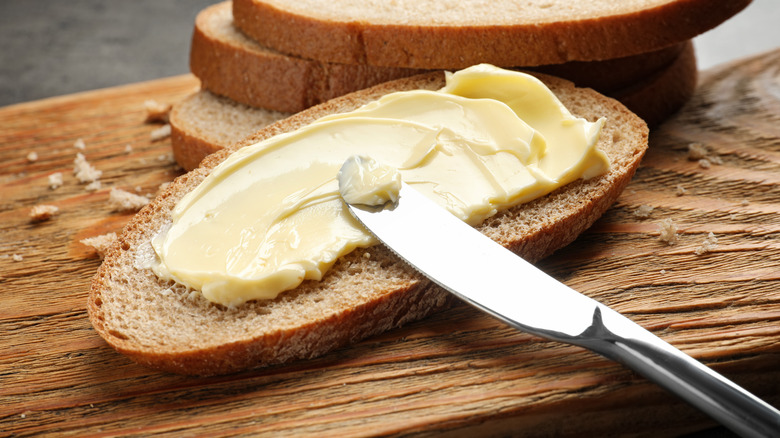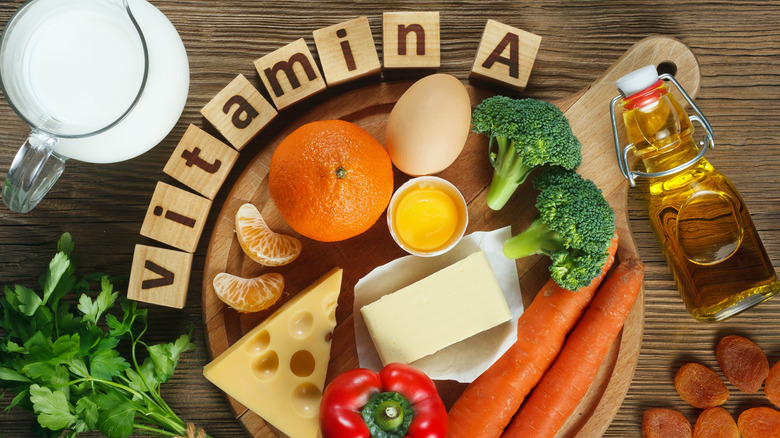Eating Butter Affects Your Skin In A Way You Wouldn't Expect
We all want younger-looking skin. According to The Healthy, weird techniques to get and maintain a radiant complexion abound, including applying aspirin masks, having plenty of sex to increase blood flow to the skin, and using skincare products with bee venom and even urine (though in synthetic form). While not every hack delivers on its promises, there is one that actually may hold up.
Butter, it just so happens, can help make your skin healthier thanks to vitamin E, a nutrient that minimizes damage from the sun, reduces inflammation, and heals wounds (via WebMD). And that's not the only skin-benefiting vitamin that butter contains. According to Healthline, one tablespoon of butter provides 11% of the Recommended Daily Intake (RDI) of vitamin A. A 2013 study published in Community Eye Health Journal notes that vitamin A is an essential micronutrient the body needs to maintain the integrity and function of surface tissues — and that includes the skin. A fat-soluble vitamin, vitamin A promotes the reproduction of skin cells. According to Martiderm, the primary form of vitamin A is retinol, a popular agent in serums, creams, and other skincare products.
Other nutrient-rich foods to help your skin glow
If you're not sold on eating a tablespoon of butter every day, there are other ways to feed your skin the vitamin E and vitamin A it needs to glow. According to Harvard Health, the human body can't produce vitamin A, so we don't have a choice but to get the nutrient through foods and supplements.
Half an avocado can give you 20% of your vitamin E requirement, according to WebMD. Peanut butter is also a rich source of vitamin E, with just 2 tablespoons providing 18% of your daily value (DV).
Animal sources have the highest amounts of vitamin A (per Healthline). But fish, too — namely, tuna, salmon, and King Mackerel — will provide 24%-43% of your daily value. And don't overlook fruits and vegetables. Just one cup of cooked sweet potatoes provides a whopping 204% of your daily value of vitamin A, and a cup of cooked kale has 98% DV. Carrots, red peppers, and leafy greens are other good sources of this nutrient. You also can get a fair amount of vitamin A from cheddar cheese (one slice provides 10% DV) and a hard-boiled egg (8% DV).

